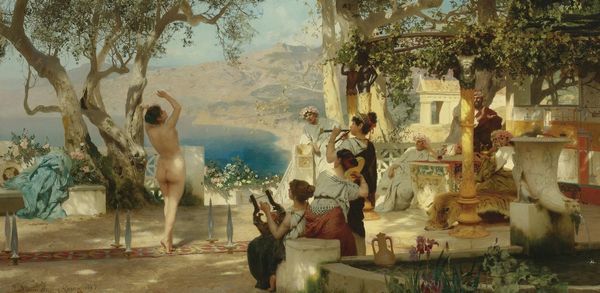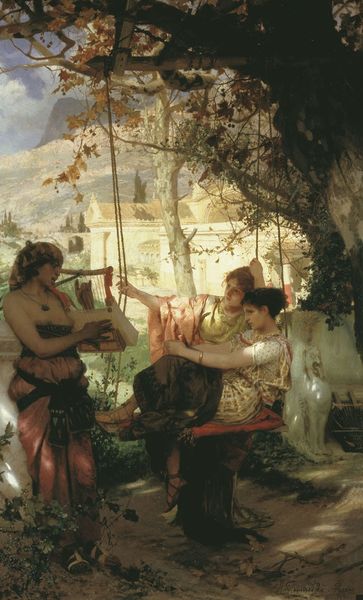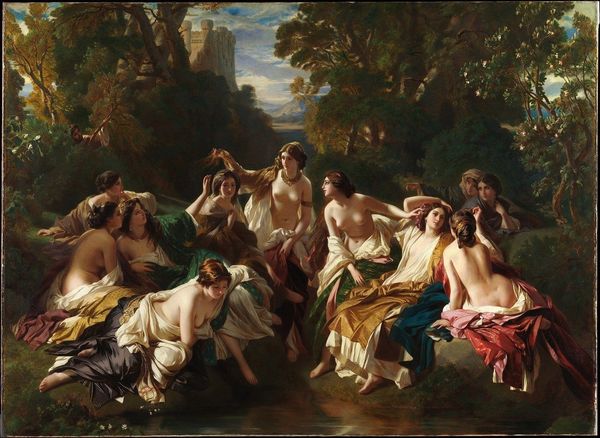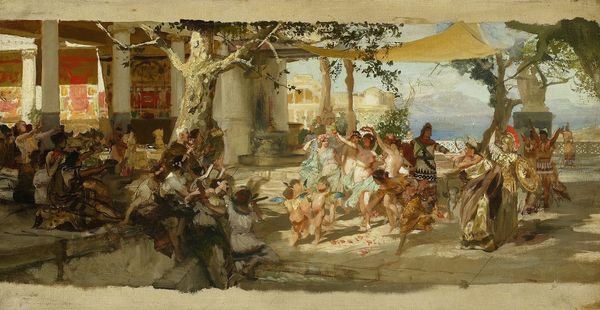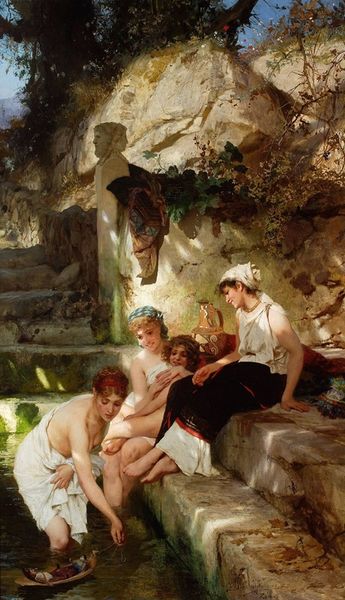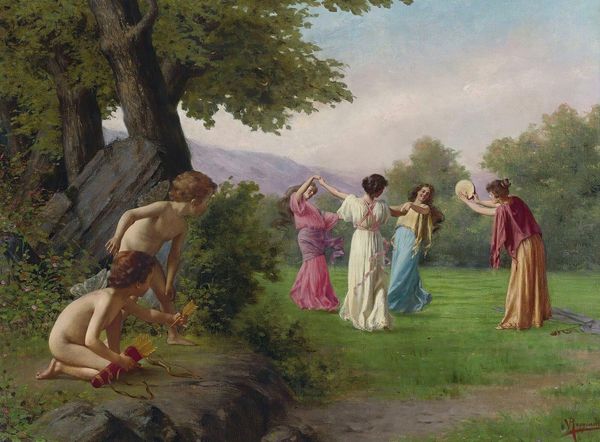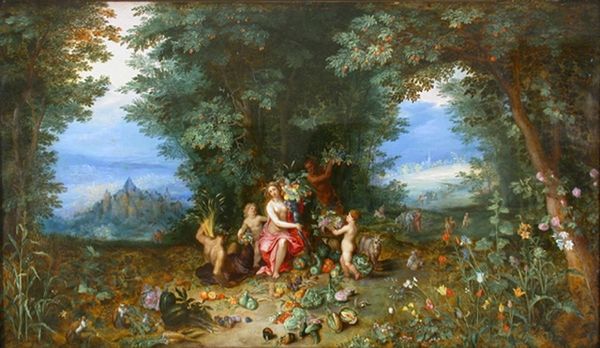
Dimensions: 225 x 120 cm
Copyright: Public domain
Curator: Here we have Henryk Siemiradzki’s “Dance Amongst Daggers,” painted in 1881 and currently held at the Tretyakov Gallery in Moscow. At first glance, what strikes you? Editor: Well, right away it feels like a paradox – this dreamy, almost Edenic setting… and then those very literal daggers lining the foreground. It’s unsettlingly beautiful, if that makes sense. Curator: Absolutely. Those daggers introduce a strong symbolic counterpoint. Consider the iconography: a nude dancer, presented in what appears to be an idyllic classical setting, almost mimicking a Bacchanal, but the daggers introduce an imminent threat. It brings a certain psychological tension. Editor: That's it! Like beauty on the precipice of…something awful. And look at how deliberately that tension is created! The landscape feels… expectant, almost. Like the moment before a storm breaks. The composition, the figures relaxing in the shade juxtaposed to that lone dancer facing the sea, it's a whole atmosphere. It really feels… staged, not a spontaneous moment. Curator: It’s certainly a very deliberate piece of academic art, with clear references to Romanticism and classical ideals. Note the arrangement of the figures, and their relation to the idyllic natural background – elements drawn from history and genre painting and even a touch of allegory. There’s a studied theatricality here that invites analysis. But perhaps it speaks more profoundly to the enduring anxieties lurking beneath facades of beauty and pleasure. The use of weapons arranged as decoration – how are we to interpret this symbol? Editor: I love how that threat shifts the whole painting from pleasant escapism into something much darker. Is it commentary on power? Gender? Or the fragile nature of happiness, which has to be constantly protected by force? And look! She is not menaced only by swords! Isn't there something slightly sinister in how these men are leering? Like she is some sort of offering? I guess that by choosing such a direct visual metaphor Siemiradzki is avoiding more complex political realities. Curator: Precisely, the painting’s open-ended narrative allows various readings. It showcases a kind of performance where innocence confronts the ever-present possibility of violence. This play creates a complex message about what lies beneath cultural artifice. Editor: A little too on the nose for my taste, perhaps, but certainly impactful. I feel as though I would love a story by Borges set in such a disturbing setting, though. What are your thoughts about the landscape as a symbol of history itself? Curator: I will be looking for more of his paintings later this afternoon...
Comments
No comments
Be the first to comment and join the conversation on the ultimate creative platform.
